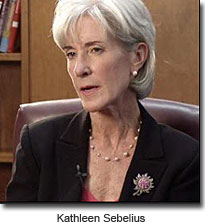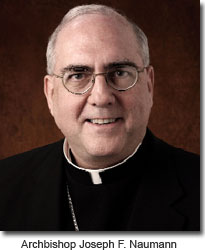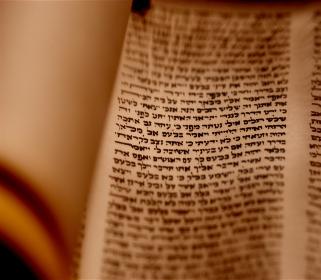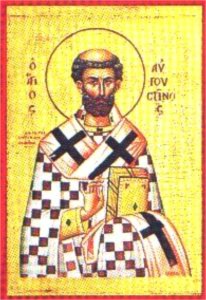by the Pontifical Council Promoting Christian Unity.
from the website: CatholicCulture.org.
The Greek and Latin Traditions About the Procession of the Holy Spirit
In its first report on The Mystery of the Church and of the Eucharist in the Light of the Mystery of the Holy Trinity, unanimously approved in Munich on 6 July 1982, the Joint International Commission for Theological Dialogue between the Roman Catholic Church and the Orthodox Church had mentioned the centuries-old difficulty between the two Churches concerning the eternal origin of the Holy Spirit. Not being able to treat this subject for itself in this first phase of the dialogue, the Commission stated: “Without wishing to resolve yet the difficulties which have arisen between East and West concerning the relationship between the Son and the Spirit, we can already say together that this Spirit, which proceeds from the Father (Jn. 15:26) as the sole source in the Trinity and which has become the Spirit of our sonship (Rom. 8:15) since he is also the Spirit of the Son (Gal. 4:6), is communicated to us particularly in the Eucharist by this Son upon whom he reposes in time and in eternity (Jn. 1:32).” (Information Service of the Secretariat for Promoting Christian Unity, no. 49, p. 108, I, 6).
The Catholic Church acknowledges the conciliar, ecumenical, normative, and irrevocable value, as expression of the one common faith of the Church and of all Christians, of the Symbol professed in Greek at Constantinople in 381 by the Second Ecumenical Council. No profession of faith peculiar to a particular liturgical tradition can contradict this expression of the faith taught by the undivided Church.
On the basis of Jn. 15:26, this Symbol confesses the Spirit “to ek tou Patros ekporeuomenon” (“who takes his origin from the Father”). The Father alone is the principle without principle (arche anarchos) of the two other persons of the Trinity, the sole source (peghe) of the Son and of the Holy Spirit. The Holy Spirit, therefore, takes his origin from the Father alone (ek monou tou Patros) in a principal, proper, and immediate manner.1
The Father’s Monarchy
The Greek Fathers and the whole Christian Orient speak, in this regard, of the “Father’s Monarchy,” and the Western tradition, following St. Augustine, also confesses that the Holy Spirit takes his origin from the Father principaliter, that is, as principle (De Trinitate XV, 25, 47, P.L. 42, 1094-1095). In this sense, therefore, the two traditions recognize that the “monarchy of the Father” implies that the Father is the sole Trinitarian Cause (Aitia) or Principle (Principium) of the Son and the Holy Spirit.
This origin of the Holy Spirit from the Father alone as Principle of the whole Trinity is called ekporeusis by Greek tradition, following the Cappadocian Fathers. St. Gregory of Nazianzus, the Theologian, in fact, characterizes the Spirit’s relationship of origin from the Father by the proper term ekporeusis, distinguishing it from that of procession (to proienai) which the Spirit has in common with the Son. “The Spirit is truly the Spirit proceeding (proion) from the Father, not by filiation, for it is not by generation, but by ekporeusis” (Discourse 39. 12, Sources chretiennes 358, p. 175). Even if St. Cyril of Alexandria happens at times to apply the verb ekporeusthai to the Son’s relationship of origin from the Father, he never uses it for the relationship of the Spirit to the Son (c.f. Commentary on St. John, X, 2, P.G. 74, 910D; Ep 55, P.G. 77, 316D, etc.). Even for St. Cyril, the term ekporeusis as distinct from the term “proceed” (proienai), can only characterize a relationship of origin to the principle without principle of the Trinity: the Father.
That is why the Orthodox Orient has always refused the formula to ek tou Patros kai tou Uiou ekporeuomenon [an unwisely proposed translation of “who proceeds from the Father and the Son”] and the Catholic Church has refused the addition kai tou Uiou [and the Son] to the formula ek to Patros ekporeumenon in the Greek text of the Nicene-Constantinopolitan Symbol, even in its liturgical use by Latins.
Orthodox View: Holy Spirit from the Father Through the Son
The Orthodox Orient does not, however, refuse all eternal relationship between the Son and the Holy Spirit in their origin from the Father. St. Gregory of Nazianzus, a great witness to our two traditions, makes this clear in response to Macedonius who was asking: “[Macedonius asks] What then is lacking to the Spirit to be the Son, for if nothing was lacking to him, he would be the Son? We say [Gregory answers] that nothing is lacking to him, for nothing is lacking to God; but it is the difference in manifestation, if I may say so, or in the relationship between them (tes pros allela scheseos diaphoron) which makes also the difference in what they are called” (Discourse 31, 9, Sources chretiennes No. 250, pp. 290-292).
The Orthodox Orient has, however, given a happy expression to this relationship with the formula dia tou Uiou ekporeuomenon (who takes his origin from the Father by or through the Son). St. Basil already said of the Holy Spirit: “Through the Son (dia tou Uiou), who is one, he is joined to the Father, who is one, and by himself completes the blessed Trinity” (Treatise on the Holy Spirit, XVIII, 45, Sources chretiennes 17 bis, p. 408). St. Maximus the Confessor said: “By nature (phusei) the Holy Spirit in his being (kat’ousian) takes substantially (ousiodos) takes his origin (ekporeuomenon) from the Father through the Son who is begotten (di Uiou gennethentos)” (Quaestiones ad Thalassium, LXIII, P.G. 90, 672 C). We find this again in St. John Damascene: “ho Pater aeien, echon ex eautou ton autou logon, kai dia tou logou autou ex eautou to Pneuma autou ekporeuomenon,” in English: “I say that God is always Father since he has always his Word coming from himself, and through his Word, having his Spirit issuing from him” (Dialogus contra Manichaeos 5, P.G. 94, 1512 B, ed. B. Kotter, Berlin 1981, p. 354; c.f. P.G. 94, 848-849 A). This aspect of the Trinitarian mystery was confessed at the seventh Ecumenical council, meeting at Nicaea in 787, by the Patriarch of Constantinople St. Tarasius, who developed the Symbol as follows: “to Pneuma to agion, to Kyrion kai Zoopoion, to ek tou Patros dia tou Uiou ekporeuomenon” (Mansi, XII, 1122 D).
This doctrine all bears witness to the fundamental Trinitarian faith as it was professed together by East and West at the time of the Fathers. It is the basis that must serve for the continuation of the current dialogue between Catholic and Orthodox.
Catholic Teaching on the Filioque
The doctrine of the Filioque must be understood and presented by the Catholic Church in such a way that it cannot appear to contradict the Monarchy of the Father nor the fact that he is the sole origin (arche, aitia) of the ekporeusis of the Spirit. The Filioque is, in fact, situated in a theological and linguistic context different from that of the affirmation of the sole Monarchy of the Father, the one origin of the Son and of the Spirit. Against Arianism, which was still virulent in the West, its purpose was to stress the fact that the Holy Spirit is of the same divine nature as the Son, without calling in question the one Monarchy of the Father.
We are presenting here the authentic doctrinal meaning of the Filioque on the basis of the Trinitarian faith of the Symbol professed by the second Ecumenical Council at Constantinople. We are giving this authoritative interpretation, while being aware of how inadequate human language is to express the ineffable mystery of the Holy Trinity, one God, a mystery which is beyond our words and our thoughts.
The Catholic Church interprets the Filioque with reference to the conciliar and ecumenical, normative, and irrevocable value of the confession of faith in the eternal origin of the Holy Spirit, as defined in 381 by the Ecumenical Council of Constantinople in its Symbol. This Symbol only became known and received by Rome on the occasion of the Ecumenical Council of Chalcedon in 451. In the meantime, on the basis of the earlier Latin theological tradition, Fathers of the Church of the West like St. Hilary, St. Ambrose, St. Augustine and St. Leo the Great, had confessed that the Holy Spirit proceeds (procedit) eternally from the Father and the Son.2
Since the Latin Bible (the Vulgate and earlier Latin translations) had translated Jn 15:26 (para tou Patros ekporeutai) by “qui a Patre procedit,” the Latins translated the “ek tou Patros ekporeuomenon” of the Symbol of Nicaea-Constantinople by “ex Patre procedentum” (Mansi VII, 112 B). In this way, a false equivalence was involuntarily created with regard to the eternal origin of the Spirit between the Oriental theology of the ekporeusis and the Latin theology of the processio.
The Greek ekporeusis signifies only the relationship of origin to the Father alone as the principle without principle of the Trinity. The Latin processio, on the contrary, is a more common term, signifying the communication of the consubstantial divinity from the Father to the Son and from the Father, through and with the Son, to the Holy Spirit.3 In confessing the Holy Spirit “ex Patre procedentem,” the Latins, therefore, could only suppose an implicit Filioque which would later be made explicit in their liturgical version of the Symbol.
In the West, the Filioque was confessed from the fifth century through the Quicumque (or Athanasianum,’ DS 75) Symbol, and then by the Councils of Toledo in Visigothic Spain between 589 and 693 (DS 470, 485, 490, 527, 568), to affirm Trinitarian consubstantiality. If these Councils did not perhaps insert it in the Symbol of Nicaea-Constantinople, it is certainly to be found there from the end of the eighth century, as evidenced in the proceedings of the Council of Aquileia-Friuli in 796 (Mansi XIII, 836, D, ff.) and that of Aix-la-Chapelle of 809 (Mansi XIV, 17). In the ninth century, however, faced with Charlemagne, Pope Leo III, in his anxiety to preserve unity with the Orient in the confession of faith, resisted this development of the Symbol which had spread spontaneously in the West, while safeguarding the truth contained in the Filioque. Rome only admitted it in 1014 into the liturgical Latin version of the Creed.
In the Patristic period, an analogous theology had developed in Alexandria, stemming from St. Athanasius. As in the Latin tradition, it was expressed by the more common term of ‘procession’ (proienai) indicating the communication of the divinity to the Holy Spirit from the Father and the Son in their consubstantial communion: “The Spirit proceeds (proeisi) from the Father and the Son; clearly, he is of the divine substance, proceeding (proion) substantially (ousiodos) in it and from it” (St. Cyril of Alexandria, Thesaurus, PG 75, 585 A).4
In the seventh century, the Byzantines were shocked by a confession of faith made by the Pope and including the Filioque with reference to the procession of the Holy Spirit; they translated the procession inaccurately by ekporeusis. St. Maximus the Confessor then wrote a letter from Rome linking together the two approaches — Cappadocian and Alexandrian — to the eternal origin of the Spirit: the Father is the sole Principle without Principle (in Greek, aitia) of the Son and of the Spirit; the Father and the Son are consubstantial source of the procession (to proienai) of this same Spirit. “For the procession they (the Romans) brought the witness of the Latin Fathers, as well, of course, as that of St. Cyril of Alexandria in his sacred study on the Gospel of St. John. On this basis they showed that they themselves do not make the Son cause (aitia) of the Spirit. They know, indeed, that the Father is the sole cause of the Son and of the Spirit, of one by generation and of the other by ekporeusis — but they explained that the latter comes (proienai) through the Son, and they showed in this way the unity and the immutability of the essence” (Letter to Marin of Cyprus, PG 91, 136 A-B).
According to St. Maximus, echoing Rome, the Filioque does not concern the ekporeusis of the Spirit issued from the Father as source of the Trinity, but manifests his proienai (processio) in the consubstantial communion of the Father and the Son, while excluding any possible subordinationist interpretation of the Father’s Monarchy.
The fact that in Latin and Alexandrian theology the Holy Spirit proceeds (proeisi) from the Father and the Son in their consubstantial communion does not mean that it is the divine essence or substance that proceed in him, but that it is communicated from the Father and the Son who have it in common. This point was confessed as dogma in 1215 by the fourth Lateran Council: “The substance does not generate, is not begotten, does not proceed; but it is the Father who generates, the Son who is begotten, the Holy Spirit who proceeds: so that there is distinction in persons and unity in nature. Although other (alius) is the Father, other the Son, other the Holy Spirit, they are not another reality (aliud), but what the Father is the Son is and the Holy Spirit equally; so, according to the orthodox and catholic faith, we believe that they are consubstantial. For the Father, generating eternally the Son, has given to him his substance… It is clear that, in being born the Son has received the substance of the Father without this substance being in any way diminished, and so the Father and the Son have the same substance. So the Father, the Son and the Holy Spirit, who proceeds from them both, are one same reality” (DS 804-805).
In 1274, the second Council of Lyons confessed that “the Holy Spirit proceeds eternally from the Father and the Son, not as from two principles but as from one single principle (tamquam ex uno principio)” (DS 850). In the light of the Lateran Council, which preceded the second Council of Lyons, it is clear that it is not the divine essence that can be the “one principle” for the procession of the Holy Spirit. The Catechism of the Catholic Church interprets this formula in no.248 as follows: “The eternal order of the divine persons in their consubstantial communion implies that the Father, as the ‘principle without principle,’ is the first origin of the Spirit, but also that as Father of the only Son, he is, with the Son, the single principle from which the Spirit proceeds” (Council of Lyons II, DS 850).
The Catholic Church understands that the Eastern tradition expresses first that it is characteristic of the Father to be the first origin of the Spirit. By confessing the Spirit as he “who takes his origin from the Father” (“ek tou Patros ekporeuomenon” cf. Jn 15:26), it affirms that he comes from the Father through the Son. The Western tradition expresses first the consubstantial communion between Father and Son, by saying that the Spirit proceeds from the Father and the Son (Filioque). “This legitimate complementarity, provided it does not become rigid, does not affect the identity of faith in the reality of the same mystery confessed.” (Catechism of the Catholic Church no.248). Being aware of this, the Catholic Church has refused the addition of kai tou Uiou to the formula ek tou Patros ekporeuomenon of the Symbol of Nicaea-Constantinople in the churches, even of Latin rite, which use it in Greek. The liturgical use of this original text remains always legitimate in the Catholic Church.
If it is correctly situated, the Filioque of the Latin tradition must not lead to subordination of the Holy Spirit in the Trinity. Even if the Catholic doctrine affirms that the Holy Spirit proceeds from the Father and the Son in the communication of their consubstantial communion, it nonetheless recognises the reality of the original relationship of the Holy Spirit as person with the Father, a relationship that the Greek Fathers express by the term ekporeusis.5
Harmony of Catholic and Orthodox teaching
In the same way, if in the Trinitarian order the Holy Spirit is consecutive to the relation between the Father and the Son, since he takes his origin from the Father as Father of the only Son,6 it is in the Spirit that this relationship between the Father and the Son itself attains its Trinitarian perfection. Just as the Father is characterised as Father by the Son he generates, so does the Spirit, by taking his origin from the Father, characterise the Father in the manner of the Trinity in relation to the Son and characterises the Son in the manner of the Trinity in his relation to the Father: in the fullness of the Trinitarian mystery they are Father and Son in the Holy Spirit.7
The Father only generates the Son by breathing (proballein in Greek) through him the Holy Spirit and the Son is only begotten by the Father insofar as the spiration (probole in Greek) passes through him. The Father is Father of the One Son only by being for him and through him the origin of the Holy Spirit.8
The Spirit does not precede the Son, since the Son characterises as Father the Father from whom the Spirit takes his origin, according to the Trinitarian order.9 But the spiration of the Spirit from the Father takes place by and through (the two senses of dia in Greek) the generation of the Son, to which it gives its Trinitarian character. It is in this sense that St. John Damascene says: “The Holy Spirit is a substantial power contemplated in his own distinct hypostasis, who proceeds from the Father and reposes in the Word” (De Fide Orthodoxa I, 7, PG 94, 805 B, ed. B. Kotter, Berlin 1973, p.16; Dialogus contra Manichaeos 5, PG 94. 1512 B, ed. B. Kotter, Berlin 1981, p. 354).10
What is this Trinitarian character that the person of the Holy Spirit brings to the very relationship between the Father and the Son? It is the original role of the Spirit in the economy with regard to the mission and work of the Son. The Father is love in is source (2 Cor 13:13; 1 Jn 4:8.16), the Son is “the Son that he loves” (Col 1:14). So a tradition dating back to St Augustine has seen in the Holy Spirit, through whom “God’s love has been poured into our hearts” (Rom 5:5), love as the eternal Gift of the Father to his “beloved Son” (Mk 1:11, 9:7; Lk 20:13; Eph 1:6).11
The divine love which has its origin in the Father reposes in “the Son of his love” in order to exist consubstantially through the Son in the person of the Spirit, the Gift of love. This takes into account the fact that, through love, the Holy Spirit orients the whole life of Jesus towards the Father in the fulfilment of his will. The Father sends his Son (Gal 4:4) when Mary conceives him through the operation of the Holy Spirit (cf. Lk 1:35). The Holy Spirit makes Jesus manifest as Son of the Father by resting upon him at baptism (cf. Lk 3:21-22; Jn 1:33). He drives Jesus into the wilderness (cf. Mk 1:12). Jesus returns (“full of the Holy Spirit” (Lk 4:1). Then he begins his ministry “in the power of the Spirit” (Lk 4:14). He is filled with joy in the Spirit, blessing the Father for his gracious will (cf. Lk 10:21). He chooses his apostles “through the Holy Spirit” (Acts 1:2). He casts out demons by the Spirit of God (Mt 12:28). He offers himself to the Father “through the eternal Spirit” (Heb 9:14). On the Cross he “commits his Spirit” into the Father’s hands (Lk 23:46). “In the Spirit” he descended to the dead (cf. 1 Pet 3:19), and by the Spirit he was raised from the dead (cf. Rom 8:11) and “designated Son of God in power” (Rom 1:4).12 This role of the Spirit in the innermost human existence of the Son of God made man derives from an eternal Trinitarian relationship through which the Spirit, in his mystery as Gift of Love, characterises the relation between the Father, as source of love, and his beloved Son.
The original character of the person of the Spirit as eternal Gift of the Father’s love for his beloved Son shows that the Spirit, while coming from the Son in his mission, is the one who brings human beings into Christ’s filial relationship to his Father, for this relationship finds only in him its Trinitarian character: “God has sent the Spirit of his Son into our hearts, crying Abba!Father!” (Gal 4:6). In the mystery of salvation and in the life of the church, the Spirit, therefore, does much more than prolong the work of the Son. In fact, whatever Christ has instituted — Revelation, the church, the sacraments, the apostolic ministry, and its magisterium — calls for constant invocation (epiclesis) of the Holy Spirit and his action (energeia), so that the love that “never ends” (1 Cor 13:8) may be made manifest in the communion of the saints with the life of the Trinity.
Footnotes
[1] These are the terms employed by St. Thomas Aquinas in the Summa Theologica, Ia q. 36 a. 3 1um and 2um.
[2] It is Tertullian who lays the foundations for Trinitarian theology in the Latin tradition, on the basis of the substantial communication of the Father to the Son and through the Son to the Holy Spirit: “Christ says of the Spirit ‘He will take from what is mine’ (Jn 16:14), as he does from the Father. In this way, the connection of the Father to the Son and of the Son to the Paraclete makes the three cohere one from the other. They who are one sole reality (unum) not one alone (unus) by reason of the unity of substance and not of numerical singularity” (Adv. Praxean, XXV, 1-2). This communication of the divine consubstantiality in the Trinitarian order he expresses with the verb procedere (ibid., II, 6). We find this same theology in St. Hilary of Poitiers, who says to the Father: “May I receive your Spirit who takes his being from you through your only Son” (De Trinitate XII, PL 10, 471). He remarks: “If anyone thinks there is a difference between receiving from the Son (Jn 16:15) and proceeding (procedere) from the Father (Jn 15:26), it is certain that it is one and the same thing to receive from the Son and to receive from the Father (De Trinitate, VIII, 20, PL 10, 251 A). It is in this sense of communication of divinity through procession that St. Ambrose of Milan is the first to formulate the Filioque: “The Holy Spirit when he proceeds (procedit) from the Father and the Son, does not separate himself from the Father and does not separate himself from the Son” (De Spiritu Sancto, 1, 11, 120, PL 16, 733 A = 762 D). St. Augustine, however, takes the precaution of safeguarding the Father’s monarchy within the consubstantial communion of the Trinity: “The Holy Spirit proceeds from the Father as Principle (principaliter) and, through the latter’s timeless gift to the Son, from the Father and the Son in communion (communiter)” (De Trinitate XV , 25, 47, PL 42, 1095). St. Leo, Sermon LXXV, 3, PL 54, 402; Sermon LXXVI, 2, ibid. 404).
[3] Tertullian uses the verb procedere in a sense common to the Word and the Spirit insofar as they receive divinity from the Father: “The Word was not uttered out of something empty and vain, and he does not lack substance, he who proceeded (processit) from such a (divine) substance and has made so many (created) substances. (Adv. Praxean, VII, 6). St. Augustine, following St. Ambrose, takes up this more common conception of procession: “All that proceeds is not born, although what is born proceeds” (Contra Maximinum, II, 14, 1, PL 42, 770). Much later St. Thomas Aquinas remarks that “the divine nature is communicated in every processing that is not ad extra (Summa Theologica Ia, q.27, a.3, 2um). For him, as for all this Latin theology which used the term “procession” for the Son as well as for the Spirit, “generation is a procession which puts the divine person in possession of the divine nature” (ibid., Ia. q.43, a 2, c), for “from all eternity the Son proceeds in order to be God” (ibid.). In the same way, he affirms that “through his procession, the Holy Spirit receives the nature of the Father, as does the Son (ibid., Ia, q.35, a.2, c). “Of words referring to any kind of origin, the most general is procession. We use it to indicate any origin whatever; we say, for instance, that the line proceeds from the point; that the ray proceeds from the sun, the river from its source, and likewise in all kinds of other cases. Since we admit one or another of these words that evoke origin, we can, therefore, conclude hat the Holy Spirit proceeds from the son (ibid., Ia, q.36, a.2, c).
[4] St. Cyril bears witness here to a Trinitarian doctrine common to the whole school of Alexandria since St Athanasius, who had written “Just as the Son says: ‘All that the Father has is mine’ (Jn 16:15), so shall we find that, through the Son, it is all also in the Spirit” (Letters to Serapion, III, 1, 33, PG 26, 625 B). St. Epiphanius of Salamis (Ancoratus, VIII, PG 43, 29 C) and Didymus the Blind (Treatise on the Holy Spirit, CLIII, PG 34, 1064 A) link the Father and the Son by the same preposition ek in the communication to the Holy Spirit of the consubstantial divinity.
[5] “The two relationships of the Son to the Father and of the Holy Spirit to the Father oblige us to place two relationships in the Father, one referring to the Son and the other to the Holy Spirit” (St. Thomas Aquinas, Summa Theologica, Ia, q.32, a.2, c).
[6] Cf. Catechism of the Catholic Church, no.248.
[7] St. Gregory of Nazianzus says that “the Spirit is a middle term (meson) between the Unbegotten and the Begotten” (Discourse 31, 8, Sources Chrétiennes, no.250, p.290). Cf. also, in a Thomistic perspective, G Leblond, “Point of view on the procession of the Holy Spirit,” in Revue Thomiste, LXXXVI, t.78, 1978, pp.293-302.
[8] St. Cyril of Alexandria says that “the Holy Spirit flows from the Father into the Son (en to Uiou),” (Thesaurus, XXXIV, PG 75, 577A).
[9] St. Gregory of Nyssa writes: “The Holy Spirit is said to be of the Father and it is attested that he is of the Son. St. Paul says: ‘Anyone who does not have the Spirit of Christ does not belong to him’ (Rom 8:9). So the Spirit who is of God (the Father) is also the Spirit of Christ. However, the Son who is of God (the Father) is not said to be of the Spirit: the consecutive order of the relationship cannot be reversed” (Fragment In orationem dominicam, quoted by St. John Damascene, PG 46. 1109 BC). And St. Maximus affirms in the same way the Trinitarian order when he writes: “Just as the Thought (the Father) is principle of the Word, so is he also of the Spirit through the Word. And, just as one cannot say that the Word is of the voice (of the Breath), so one cannot say that the Word is of the Spirit” (Quaestiones et dubia, PG 90, 813 B).
[10] St. Thomas Aquinas, who knew the De Fide Orthodoxa, sees no opposition between the Filioque and this expression of St. John Damascene: “To say that the Holy Spirit reposes or dwells in the Son does not exclude his proceeding from the Son; for we say also that the Son dwells in the Father, although he proceeds from the Father (Summa Theologica, Ia, q.36, a.2, 4um).
[11] St. Thomas Aquinas, following St. Augustine, writes: “If we say of the Holy Spirit that he dwells in the Son, it is in the way that the love of one who loves reposes in the loved one” (Summa Theologica Ia, q.36, a.2, 4um). This doctrine of the Holy Spirit as love has been harmoniously assumed by St. Gregory Palamas into the Greek theology of the ekporeusis from the Father alone: “The Spirit of the most high Word is like an ineffable love of the Father for this Word ineffably generated. A love which this same Word and beloved Son of the Father entertains (chretai) towards the Father: but insofar as he has the Spirit coming with him (sunproelthonta) from the Father and reposing connaturally in him” (Capita physica XXXVI, PG 150, 1144, D-1145 A).
[12] Cf. John Paul II, Encyclical Dominum et Vivificantem nn.18-24, AAS LXXVIII, 1986, 826-831. Cf. also Catechism of the Catholic Church, nos. 438, 689 690, 695, 727.






